How to fix sound errors on Windows 10, fix Windows 10 sound errors
The Windows 10 operating system offers users more upgraded features than previous operating systems. However, some computers after installing Windows 10 encounter some problems, such as the problem of computer losing sound . Many people have adjusted the cable connecting the audio device to the computer, but the situation has not improved.
If you have checked hardware devices such as speakers and cables and made sure they have no problems, the sound loss error may lie in the software.
In the article below, we will show you some ways to fix sound loss error on Windows 10.
Causes of sound problems on Windows
What is the reason behind the boiling or popping sound on Windows computers?
There can be many different causes for this problem, ranging from hardware to software. But the main reason is software-related issues.
Can this problem be fixed through the built-in audio troubleshooter?
Windows provides Audio Troubleshooter to resolve audio problems. So, users can fix the clicking sound through this built-in tool.
Strange noises appear after installing a new audio device
This can happen due to a hardware problem. Try testing the audio device on another computer. If the error also occurs on that computer, replace the device that's causing the problem.
Method 1: Check system and application volume
First, you need to check if the system volume and applications on Windows 10 have any problems. This check will help you immediately discover where the problem is (if any) to save time searching. Here's how:
Step 1 : Right-click on the speaker icon on the taskbar then select Open Volume Mixer .
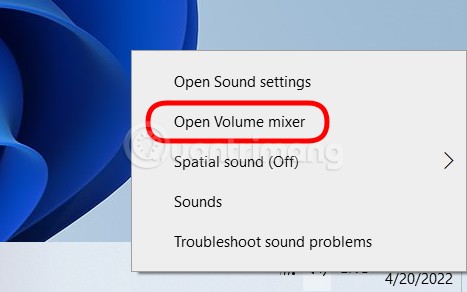
Step 2 : When the Volume Mixer window appears, pay attention to see if the system or any application has problems (marked with a red X ) with sound. If there are no problems, we will move on to look for problems in another area.
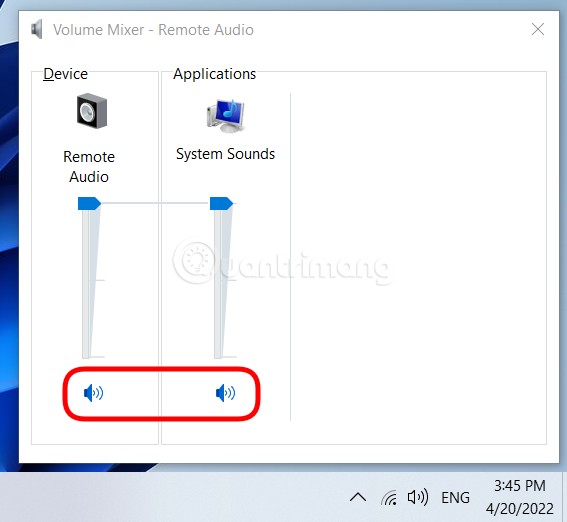
Method 2: Check the browser's sound
Sometimes we accidentally turn off the browser sound without paying attention. This causes us to keep searching everywhere without knowing where the error is that causes the browser to not make sound while everything is still normal.
On browsers like Microsoft Edge, Google Chrome and Coc Coc, you have the option to mute each browser tab. You just need to right-click on the browser tab you want to mute and select Mute site (or Mute tab).

Therefore, when you see a website that does not play sound, try right-clicking on the tab of that website to see if there is an Unmute site (Unmute tab) option or not. If so, tap it to open the audio for the website.
Method 3: Check the audio device connector
No sound on computer? First, you need to check your speaker and headphone connections and see if the audio cable is loose or connected to the incorrect jack. This is quite a basic step and should be done first to fix sound problems in Windows 10.
Before rechecking the installation system on the device, users should check the physical connections to confirm whether the sound loss error on Windows comes from a hardware or software error. For those using external speakers, you should do this step first. Check to see if the wire is in the correct connection position between the speaker and the computer. Check the correct Audio and Microphone to receive sound.
Now check your volume level from the sound icon and don't forget to check the volume level of your external speakers. Sometimes external speakers can be the reason why you are experiencing sound problems on Windows 10.
If we still don't get results after replugging the cord, we will recheck the installation system on Windows 10.
Method 4: Fix the connection using Windows Audio Troubleshooter
The Windows operating system has a default feature that detects and resolves network and audio problems. At the sound icon on the Taskbar , we right-click and select Troubleshoot sound problems to use the troubleshooter to automatically scan the sound on the computer.
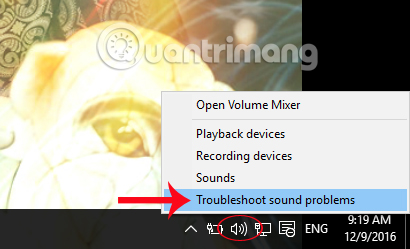
You wait a few minutes for the audio error handler to detect and automatically fix the error. If the self-correction process fails, you can also rely on the cause of the audio error to find a solution.

Method 5: Adjust the default audio format
Accidentally changing some audio formats on your computer also leads to the speaker not making sound.
Step 1:
First of all, also at the sound icon on your computer, right-click and select Playback devices .
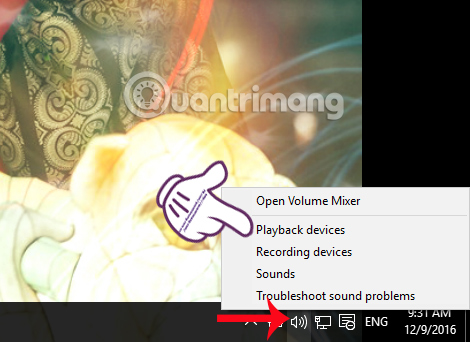
Step 2:
Next in the Sound interface , click on the speaker icon and select Properties .

Step 3:
In the Speakers Properties interface , click on the Advanced tab . Down under the Default Format section , we select the frequency 24 bit, 44100 Hz or 24 bit, 192,000 Hz . If not, choose 16 bit, 44100 Hz . Then click OK to save.
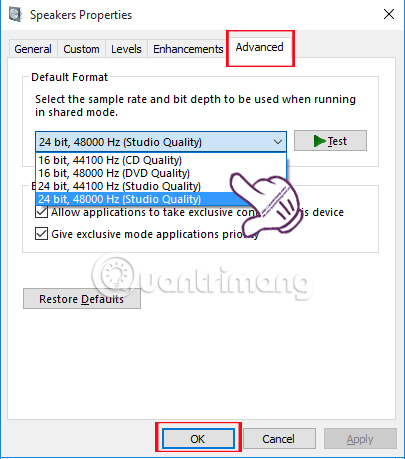
Method 6: Set default playback device to fix sound problems in Windows 10
Using USB or HDMI could be the reason why sound is not playing on Windows 10, as you need to set external devices as default. Audio enhancements can sometimes interfere with hardware drivers. Therefore, it is important to disable them until a new driver update is available on your PC.
To fix sound problems in Windows 10 by setting default device options, simply open Start and type Sound. Now, open the appropriate result and click on the Playback tab. Here, find the appropriate audio device and select Set Default.
Method 7: Disable the sound upgrade process
Audio Enhancements is a feature available on Windows 10 used to improve sound quality with externally connected speaker devices. However, this feature also sometimes causes sound loss issues.
Step 1:
Also at the sound icon on the desktop, right-click and select Playback devices . Then at the audio device interface in use, select Properties as in steps 1 and 2 in method 3 above.
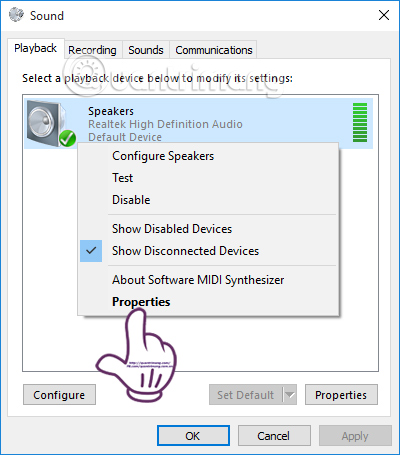
Step 2:
Go to the new interface, click on the Enhancements tab and uncheck Disable all enhancements to not use the sound enhancement feature on Windows 10.
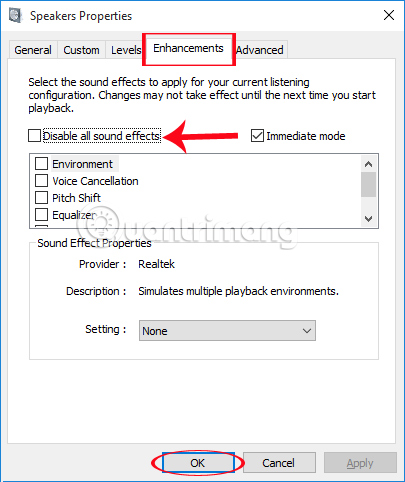
Method 8: Install or update sound drivers
Usually, sound loss errors on computers come from faulty drivers. Maybe the drivers are too old and not compatible with the current operating system, causing the computer to lose sound.
Step 1:
We press the Windows + R combination to open the Run dialog box on the computer. Then enter the keyword devmgmt.msc , click OK to access.
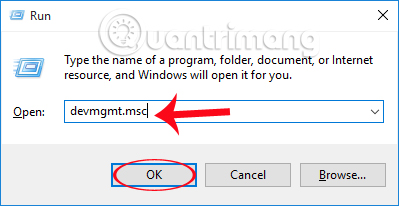
Step 2:
At the new Device Manager interface , double click on Sound, video and game controllers .

Step 3:
Here we will have 2 ways to update audio drivers, including automatically searching and downloading drivers from the home page.
First: Download Windows 10 audio drivers automatically
When you double click on Sound, video and game controllers, the sound controller will appear . We right-click on it and select Update Driver Software .
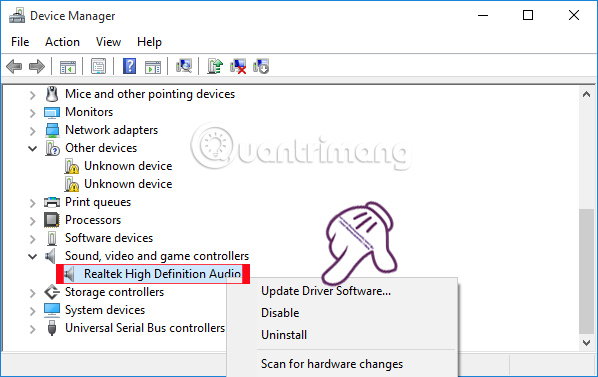
Step 2:
Then, click Search automatically for updated driver software so that Windows will automatically search and update new drivers.

Second: Download the Windows audio driver yourself
Step 1:
If the automatic driver download feature does not work, you can find the driver yourself. We proceed to follow step 1 above. But click Browse my computer for driver software .
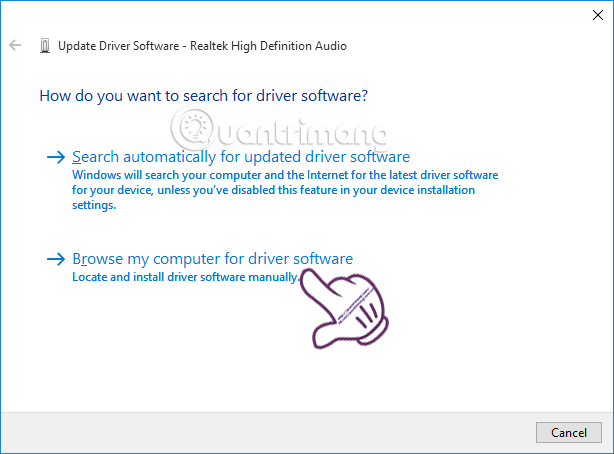
Step 2:
Continue clicking Let me pick from a list of device drivers on my computer , then click Next .
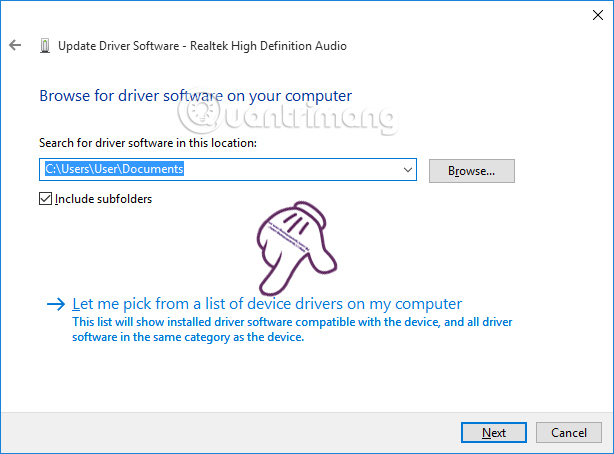
Step 3:
Finally, select High Definition Audio Device and click Next to update the new driver.

If you're afraid of tinkering with system settings to install and update drivers, you can try Driver Booster to update your computer's drivers.
Method 9: Restart Audio Services
Step 1:
Press Windows + R to open the Run dialog box , then type services.msc and click OK .
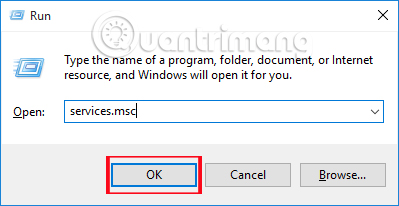
Step 2:
Next, right-click Windows Audio and select Stop to stop Audio Services. Then click Start to restart the service.

Method 10: Use Driver Booster's Fix No Sound tool
Driver Booster update software has a small tool called Fix No Sound, which helps you fix the error of your computer losing sound. You download Driver Booster and install it on your computer. Then, click the tool icon on the left hand side > select Fix No Sound .
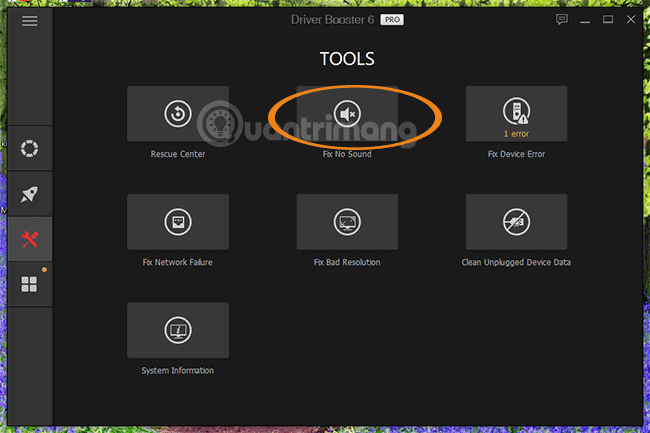
In the small window that appears, select Fix, wait a moment for the tool to check and fix the sound loss error on your computer.
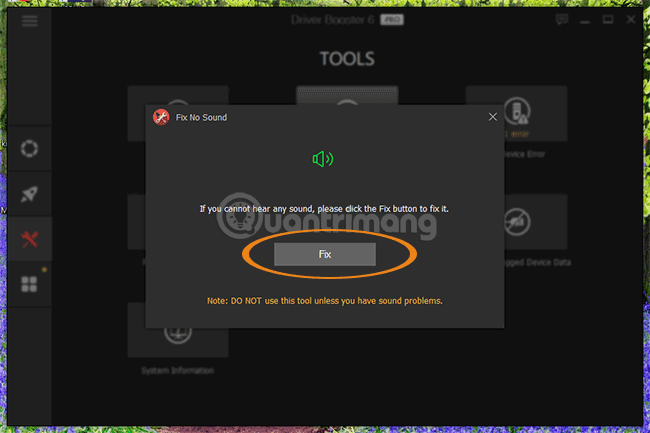
Method 11: Upgrade Windows 10 version
If the version of Windows you are using has problems, you can upgrade to the latest version to fix the sound loss error.
Step 1:
At the Settings interface on Windows 10, we click on the Update & Security button .
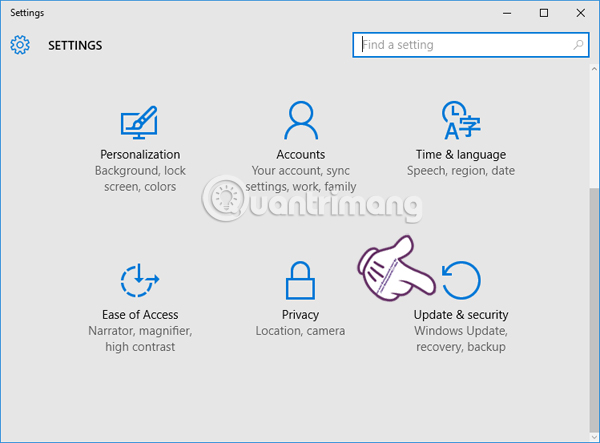
Step 2:
Next, select Windows Update in the left menu bar and select Check for updates on the right to let Windows check and upgrade the version if available.
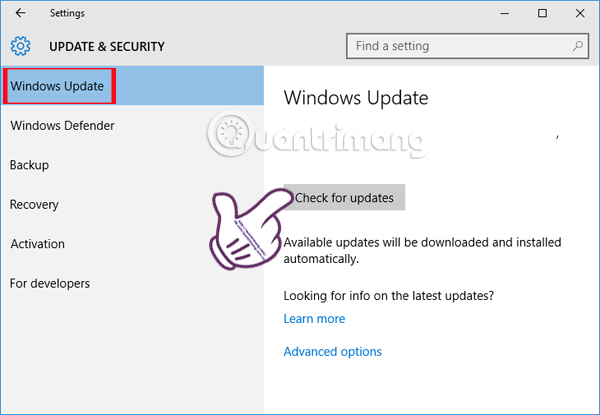
Above are some ways to help Windows 10 users fix the problem of losing sound on the computer. If you use an external speaker connection, you should first check the connection wires, then adjust the settings we mentioned above.
Method 12: Disable Exclusive Mode
Some sound drivers seem to have problems with the " Exclusive Mode " option, which gives the application exclusive control over your sound card. This is usually not a big deal. It is the bad audio driver that causes problems on your system.
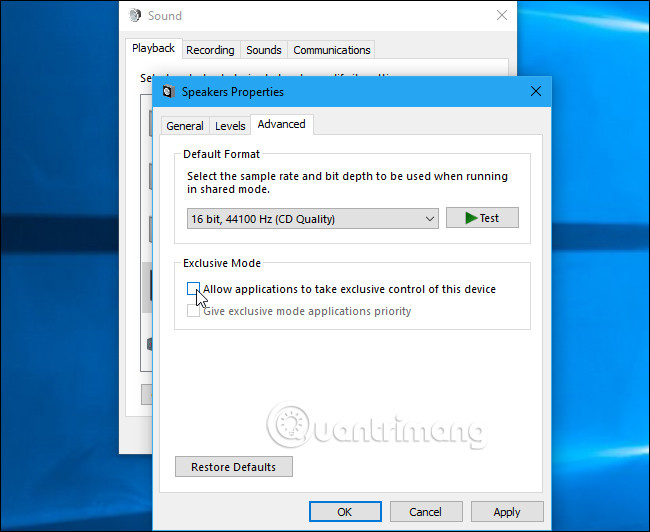
You will find this setting on the same window as the ' Default Format ' option. Turn off the ' Allow applications to take exclusive control of this device ' option in ' Exclusive Mode '. Click ' OK ' and see if this fixes your problem.
You can re-enable it if disabling this option doesn't resolve the issue.
Method 13: Check DPC latency
This issue can also be caused by DPC latency. DPC stands for ' Deferred Procedure Call '. This is the part of Windows that handles hardware drivers. If a driver takes too long to do something, it can prevent other drivers, such as your audio driver, from being able to do what they need to do in a timely manner. This can lead to sound problems such as boiling, crackling, and other problems.
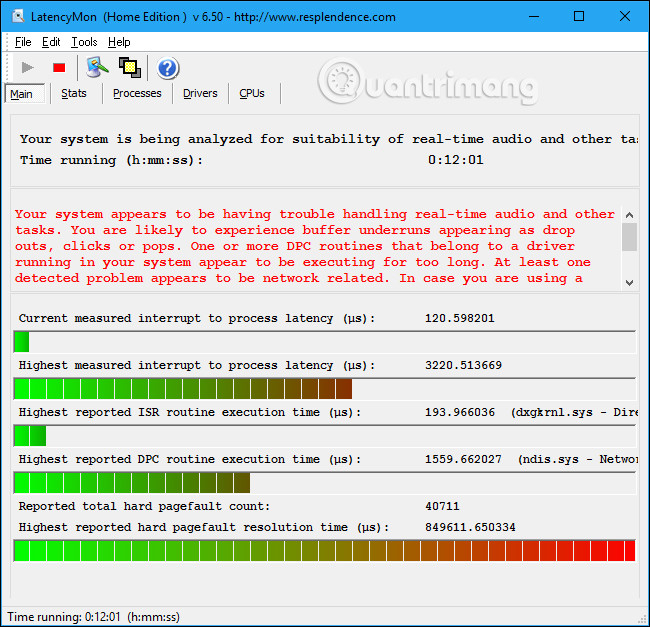
To test your DPC latency, download and run LatencyMon. Click the " Start " button and let it run in the background for a while. It will monitor your system's hardware drivers and provide recommendations, letting you know which hardware drivers may be having problems. If a specific hardware driver is causing the problem, you can try updating the device driver, turning off the device, removing the device from your system, or replacing it.
Even if you see some latency issues here, they won't necessarily be an issue for a typical PC where you just listen to music, watch videos, and play video games. If the tool warns you about a problem but you don't see any, you don't need to disable any hardware. This is more important for professional use cases where you really need real-time audio. However, if you see a problem, the tool may indicate a faulty hardware driver.
- LatencyMon download link: http://www.resplendence.com/latencymon
Method 14: Set Processor power management to 100%
Here's how:
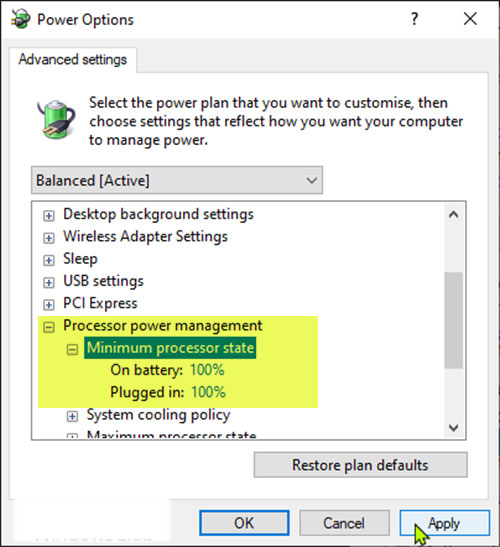
- Right click on the battery icon on the Taskbar.
- Select Power Options .
- Click Change plan settings for your power plan.
- Click the Change advanced power settings link .
- Scroll down, expand the Processor Power management and Minimum processor state sections .
- Change Minimum Processor state to 100%
- Click Apply > OK to save the changes.
Now check to see if you can still hear a popping sound from your computer's speakers or headphones, if you have them plugged in. If the problem persists, continue with the next solution.
Method 15: Disable ATI HDMI Audio
Sometimes ATI HDMI Audio can be the reason why there is a problem with the sound coming out of your device. Disable ATI HDMI Audio to make sure it's not the culprit.
Here's how:
- Press Windows key + X to open, then press M key to open.
- Expand the Sound, video and game controllers category .
- Right click on the ATI HDMI Audio device and select Disable .
Method 16: Edit Registry
To fix the error of Windows 10 having noisy sound, you can choose to edit the Registry to improve sound quality. Do the following:
1. Press Windows + R keys together to open the Run dialog box , then enter regedit in the box and click OK to continue.
2. In the Registry Editor window, navigate to the path:
HKEY_CURRENT_USERSoftwareRealtekRAVCpI64Powermgnt path3. Change the value data of Delay time to 10. Change the data value of Enabled from 0 to 1 to fix the buzzing sound of Windows. Change Only Battery to 1 .
After that, restart the computer and check if the Windows 10 sound problem is fixed.
Method 17: Change USB adapter
If you're experiencing Windows 10 audio crackling on external speakers, it's possible your audio jack is damaged or not working as expected. Therefore, you can choose to buy a USB to 3.5mm jack. Then, connect it to your computer and device, then check if the sound output on Windows 10 is fixed or not.
Wishing you success!
If you can't fix the problem yourself, don't hesitate, message TipsMake.com, we're ready to help you if possible!
Refer to the following articles for more information:
 How to copy, delete, move, rename files/folders using PowerShell on Windows PC
How to copy, delete, move, rename files/folders using PowerShell on Windows PC 8 effective ways to check your hard drive to periodically check the health of your hard drive
8 effective ways to check your hard drive to periodically check the health of your hard drive Do you know how to check copyrighted Windows or 'pirated' Windows?
Do you know how to check copyrighted Windows or 'pirated' Windows? How to upgrade Win 7 to Win 10, update copyright windows
How to upgrade Win 7 to Win 10, update copyright windows How to uninstall software with Your Uninstaller, completely delete redundant files and errors on your computer
How to uninstall software with Your Uninstaller, completely delete redundant files and errors on your computer How to remove programs on Windows 10, 8.1/8, 7, Vista, XP computers
How to remove programs on Windows 10, 8.1/8, 7, Vista, XP computers